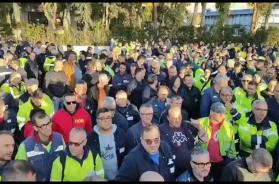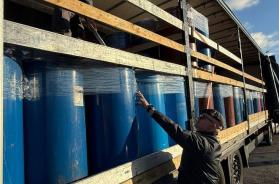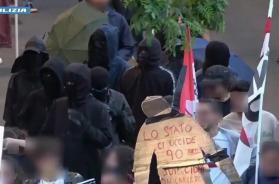Giuliano Pisani, a former alderman for Cultural heritage in Padua, was incandescent over the apparent cover-up of the affair. "It is absolutely scandalous that we only learned about this collapse from a citizens' association and not from the town hall," he fulminated.
Bitonci said that assessments still are being done of the extent of the damage and cost of repairs. He dismissed the criticism over the failure to publicise the act of God. "The city government, the alderman and the mayor were alerted immediately about this fact but one was waiting for an expert examination by the specialized firm before giving out the news," he said.
Stone from the façade of the chapel was reportedly partially damaged and an iron cross - which Pisani said dates from the chapel's earliest days - was removed after it was in danger of falling from the damaged façade. The chapel, which was commissioned by banker Enrico Scrovegni, contains two very large fresco cycles covering three walls from floor to ceiling. These depict the Life of Christ and the Life of the Virgin and are considered to be among the most important masterpieces of Western art.
The site has also been known as the Arena Chapel because it was constructed by Scrovegni on land that was adjacent to a historic Roman arena. The chapel has been deemed a UNESCO World Heritage Site and in 2002, underwent extensive renovations.


















